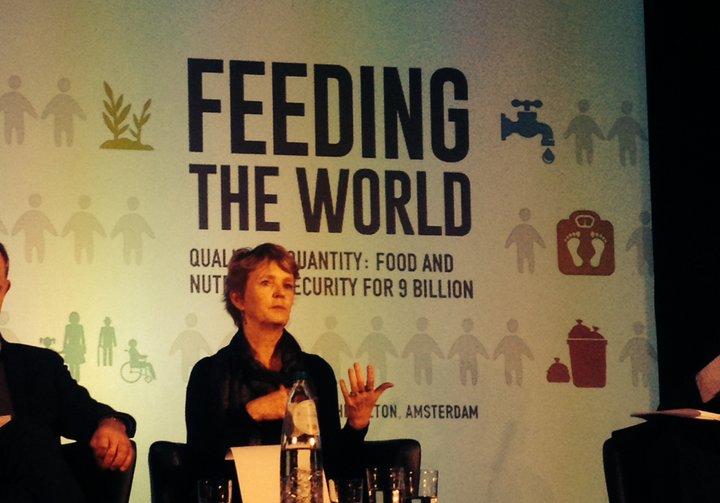2015 - A changing climate for agricultural and tree biodiversity

In her latest DG Dialogues blog, Ann Tutwiler looks back at 2014 and how it inspired this year's debate on climate change and what it means for agriculture.
Reflections from ‘The Economist - Feeding the World': Amsterdam, 12th February 2015
Last week, I participated in The Economist Feeding the World 2015 Conference in Amsterdam. Global experts came together to examine the implications of increased demand for food and changing food patterns in light of the emerging 2015 sustainable development goals. I took part in a panel discussion on climate change and sustainable agriculture – a topic set to dominate headlines in 2015 as the build-up starts to the United Nations Climate Change Conference (COP21) to be held in Paris at the end of the year.
Before I share some of the insights to the latest thinking I gained during this event, I would like us to take a step back to last year.
In 2014, the Intergovernmental Panel on Climate Change (IPCC) report indicated that agricultural production will reduce by as much as 2% per decade up to 2050, while demand could increase by 14%.
Yet most of the debate around climate change has been on who is responsible for mitigating industrial greenhouse gas emissions rather than facing the reality that climate change is already having a severe effect on food production all over the world. It is shocking that agriculture – the source of our daily sustenance – has only recently been recognized as an issue. So, it is gratifying to see The Economist focusing so much attention on this important issue.
During the conference, the experts discussed the viability of smallholder farming and whether this is a sustainable business model or whether the international community should focus its attention on medium and large scale systems. Around 85% of the 525 million farms worldwide operate on plots of less than 2 hectares, with an estimated 92% of the world’s 1.1 billion ‘dollar poor’ people living on family farms in East Asia, South Asia and Sub-Saharan Africa. Certainly over time, these small farms will begin to consolidate, many through cooperative farming models. But this process will not happen overnight, and given the share of land and water these farmers manage, and the food they produce, smallholder farmers need to improve their productivity and adapt to climate change if they are to improve their livelihoods and well-being.
While much of the conference focused on technical solutions to the challenges facing smallholders, in my view, the most important ‘technology’ farmers need is knowledge. At Bioversity International, we believe that agricultural biodiversity offers important solutions to the challenges facing farmers. Often farmers are not aware of or have access to varieties that can help them adapt their farms to climate change, or improve their household's nutrition, may be available beyond their own farms and communities, or how to optimize the use of this agricultural biodiversity to manage pests and diseases.
For example, there may be useful varieties in their country's genebanks, or varieties that are grown in other regions that are better adapted to the climatic conditions they are facing. In Mexico, it has been found that midland maize varieties are able to yield well enough in highland conditions. So as temperatures rise in the upper highlands, linking highland farmers to midland farmers (sometimes living within 10km of each other) can create a promising source of materials to adapt to change. But many of these links do not yet exist and need to be actively cultivated or supported, especially in areas where modern varieties are unsuitable or unavailable.
But for farmers to use new knowledge and adopt new practices they need evidence. Farmers need to know that using biodiversity can deliver what they need. For example, in India, our research shows that sun damage to wheat can be offset by planting a mix of wheat varieties with different flowering times – wheat is particularly sensitive to burning when it flowers. Our research in Ecuador demonstrates that when farmers’ grow three or more bean varieties in their fields, they not only experience improved yields by up to 32% through improved drought tolerance, but also see a reduction in the severity of common bean rust by up to 50%. With pest and disease outbreaks expected to increase with climate change, this is a win-win for the farmers.
Getting this knowledge out to the people who need it most to make informed decisions is at the heart of Bioversity International’s mission, whether it is to help a farmer know what to plant in a changing environment, or to help inform policy decisions at the regional, national or international level. This year, Bioversity will be focusing its attention on how biodiversity can help farmers adapt to changing climatic conditions, including to new pests and diseases.
M. Ann Tutwiler
Email: [email protected]
